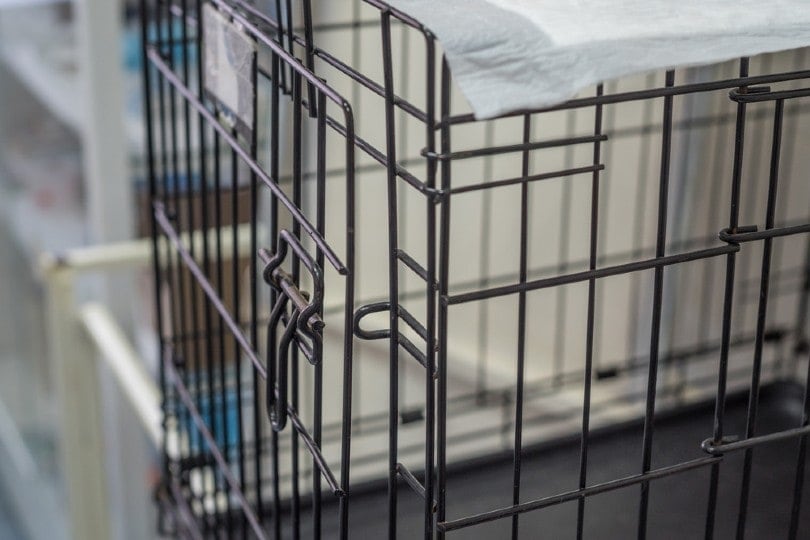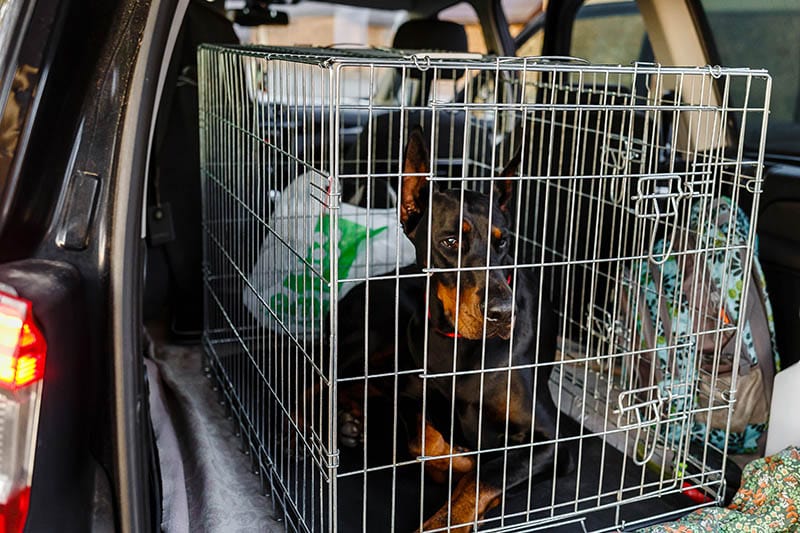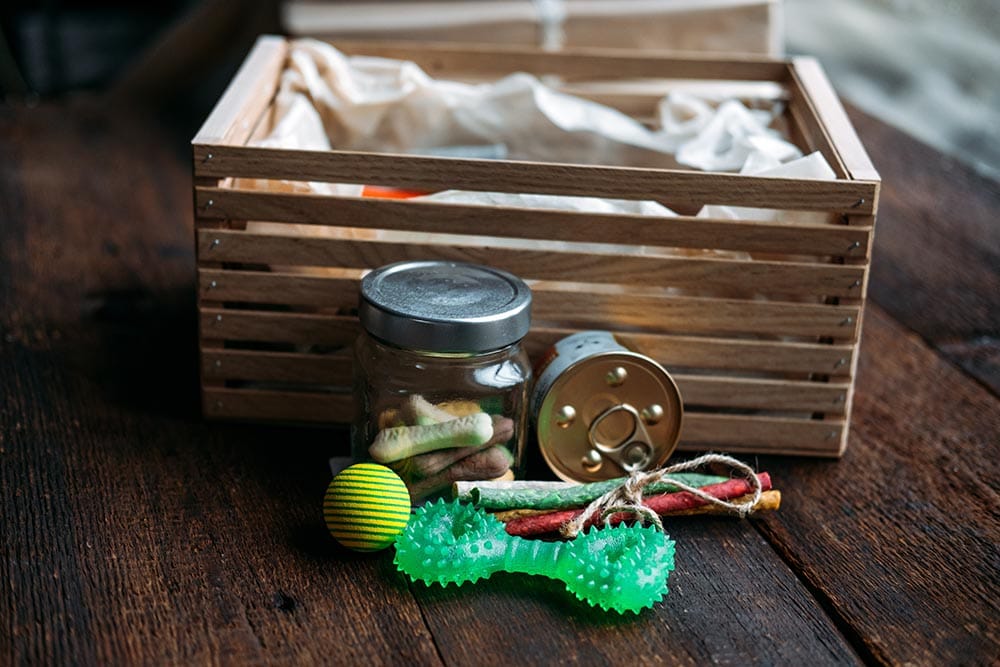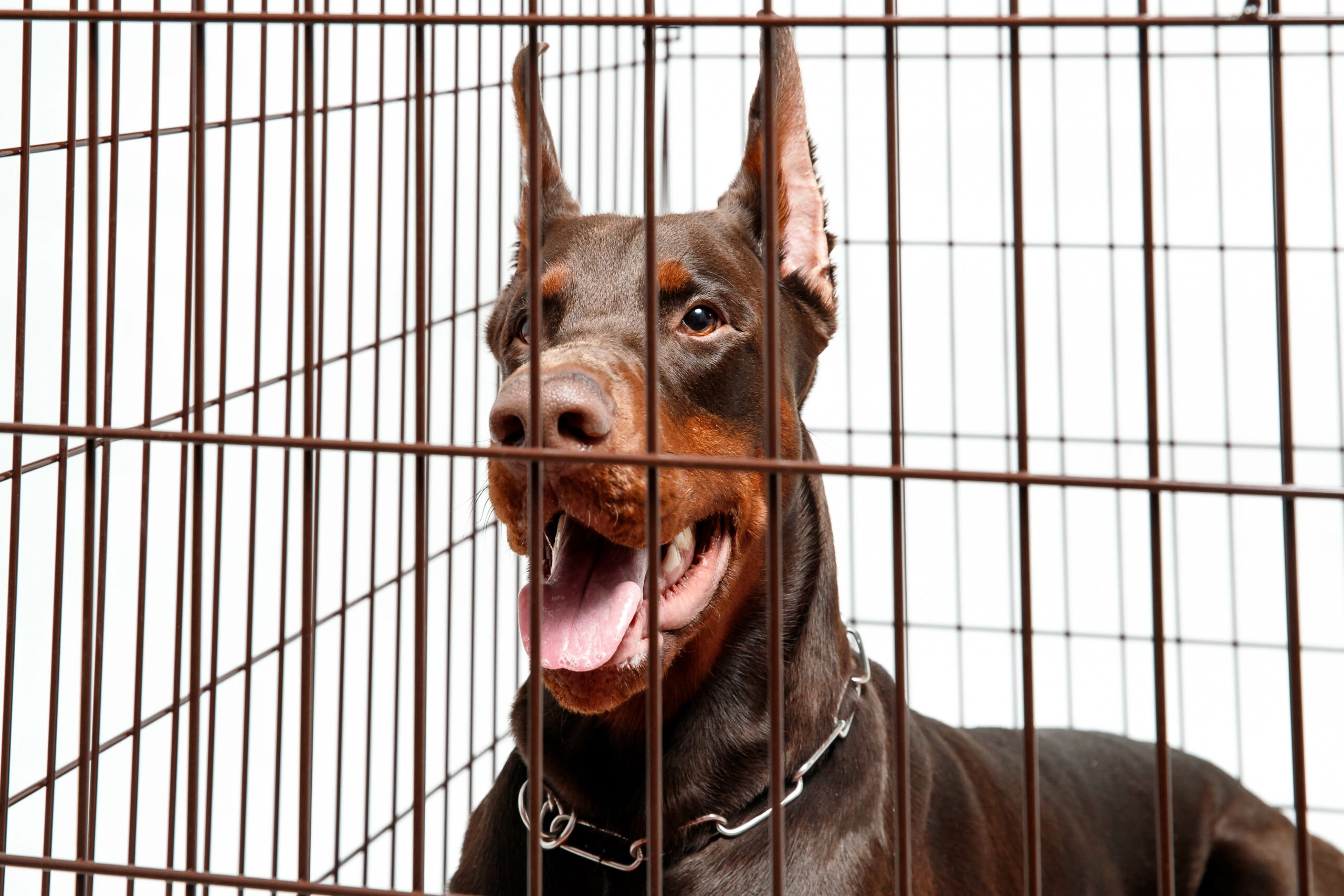We highly recommend that all dogs are crate trained. Crates should not serve as a source of punishment for dogs. Instead, crates provide a safe place for dogs to retreat if needed. Plus, having your dog crate trained prevents them from becoming stressed out if they need to be inside a crate. It makes going to the vet much easier if your dog is already used to the crate.
Crate training is about giving your dog their own space. However, dogs won’t appreciate this space unless you take the time to associate it with positive happenings, like treats and unique toys. Luckily, this isn’t hard, but it takes some specific steps.
Here are some tips for crate training your Doberman. As larger dogs, crate training a Doberman is extra-important.
The 10 Tips for Crate Training Your Doberman
1. Choose the Right Crate
Choosing the right crate for training your dog is vital. Dobermans are quite large, so you’ll need to get a larger crate. You want a crate that’s big enough for your dog to stand up and turn around. However, you don’t want it much bigger than that. You want the crate to be cozy. If it is too big, you may undermine much of your efforts.
Bigger is not better in this case.
If your dog is a puppy, then we recommend getting an adjustable crate. These crates usually have an adjustable wall in the middle that can be moved as your dog gets older and bigger. Typically, this is much better than purchasing a bunch of different crates as your puppy ages. Purchase a crate that your dog can fit in as an adult, and then use the divider to make it smaller when they’re younger.

2. Established a Relaxed Mindset
Remember, the crate is not a punishment. Therefore, you shouldn’t use it as a punishment. Your mindset will affect how your dog sees the crate, and we want your canine to see it positively. Therefore, you need to consider the crate as a positive, relaxing place for your canine.
Be sure that no one else in your family uses the crate as punishment, either. Even threatening crate time can make your dog see it as a punishment—not a place they should want to be.
It can take up to 6 months of regular training for your dog to start enjoying crate time. Therefore, you’re in for the long haul. Be prepared and patient.
3. Make Your Dog Comfortable
You want your dog to see the crate as a comfortable place. Therefore, consider using a waterproof dog bed or a towel to create a cozy environment. For puppies, remember that accidents will likely happen. Therefore, be sure that the bed is waterproof and machine-washable. There are dog crate pads available that are designed to cover the whole bottom of the crate. While you don’t have to have one, they can be useful for some dogs.
However, some dogs may prefer a harder surface—or they may just chew up a dog bed. Therefore, don’t feel like you have to get your dog a bed if they don’t like it or don’t use it as a bed.

4. Use Special Treats
We highly recommend utilizing long-lasting treats your dog only gets during crate time. These treats can give your dog something to do, and they help promote a positive outlook. You should only use them during crate time, so your dog has something to look forward to. You want them to look forward to their crate because they will get that one special treat.
The positive feelings your dog feels about the treat will rub off on the crate. Eventually, they’ll see the crate as a positive, fun thing.
Of course, be sure whatever treat you use can be safely given unsupervised. Most bones don’t fall into this category. However, you can use a KONG filled with peanut butter or a similar treat. Freeze the treat after filling so that it will last even longer.
5. Limit the Time
Be sure to limit the time your dog spends in the crate. Your dog needs to eat and must use the bathroom. You don’t want your dog to associate the crate with the uncomfortable feeling of a full bladder or hunger. Therefore, be sure that their needs are taken care of.
Most puppies cannot stay in a crate all day, even when they are as big as a Doberman. Therefore, you’ll need to visit your house multiple times throughout the day to let them out. You can also hire a dog walker or have a friend stop by. Many people go home during their lunch breaks to let their puppies outside.
Be sure you have proper expectations.

6. Remove Your Dog’s Collar
We recommend taking your dog’s collar off when they are in the crate. Their tags and collar can get hung, causing strangulation and injury. Therefore, if your dog isn’t being directly supervised, you should remove their collar.
Plus, all dogs need their collar off sometimes. It helps their fur settle back down into its normal position and can prevent skin irritation.
7. Play Games
There are a few games you can play in your dog’s crate. Get small treats and hide them under towels and blankets. Throw a ball into the crate and play fetch. Sometimes, you can find puzzle toys that will work in crates. However, remember that your dog shouldn’t have much extra room, so larger puzzle toys won’t work.
However, balls that drop treats and similar toys may be a solid option. You may want to have multiple options to mix it up a bit.

8. Start Small
You can’t expect your dog to be a pro at the crate the first time they go in it. Therefore, we recommend starting things off rather slowly. Perhaps try the crate for only a few minutes. You want the session to end on a good note. Therefore, don’t keep pushing the time until your dog is whining to get out. You preferably want to give your dog enough time to settle down and get comfortable, but don’t push it so much that your dog is getting antsy.
Remember, you want it to stay positive. If your dog thinks that they’re stuck in the crate for a long time, they may not think of it so positively.

9. Have a Routine
Put your dog in the crate at the same time each day. This way, your dog will get used to being in it at certain times and know what to expect. Preferably schedule crate time after all your dog’s needs have been met. Preferably, feed your dog, wait thirty minutes, take them outside, and then put them in the crate. Smaller puppies will need more breaks and be fed more often, so keep this in mind when scheduling it.
Of course, you’ll need to use the crate outside of this routine sometimes. This is fine; just expect a bit of difficulty settling down when you do.
10. Have Patience
You’ll need to be patient and expect crate training to take a while. Usually, progress does not look like a straight line. Your dog may have a hard day, and that’s okay. Stay calm and consistent. Have an established routine and follow it. Even when you feel like it isn’t working, consistency is the key.
It can take a long time for dogs to crate train. Even then, they may make mistakes or have days where it’s hard for them to settle down.
Conclusion
It’s important to crate-train your dog. While people often see a cage as restricting, dogs are den animals. Therefore, they often feel safe in enclosed spaces. By making their crate a safe place they find comfortable, you provide them with somewhere they can escape to.
If crate-trained well, dogs will often visit their crate on their own. It is recommended to keep their crate accessible somewhere quiet so that they can escape to it when they’re feeling overwhelmed. In this way, you can help prevent stress-driven accidents.
Featured Image Credit: Parilov, Shutterstock

